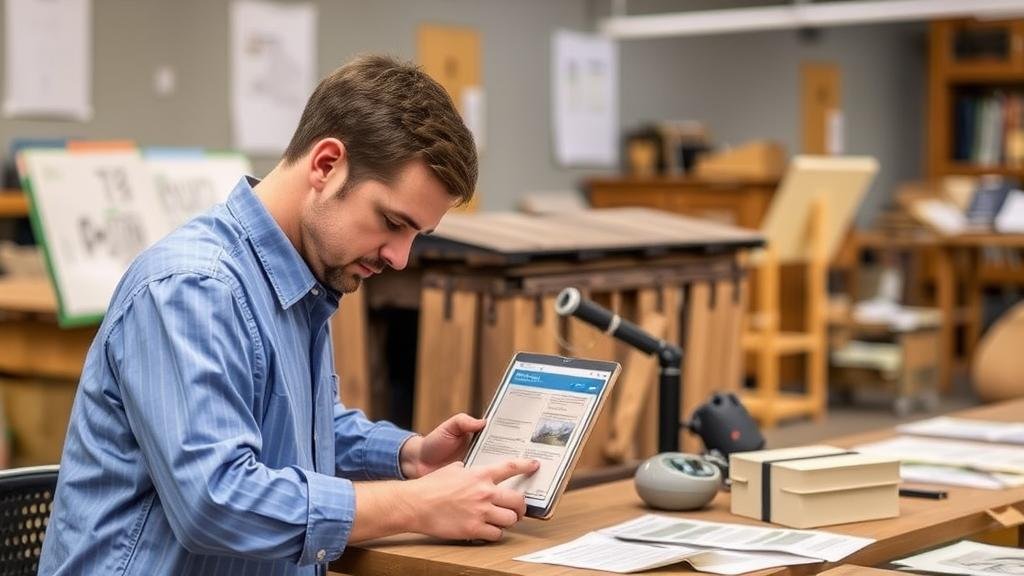How to Use Digital Archives to Uncover Forgotten Artifact Sites
How to Use Digital Archives to Uncover Forgotten Artifact Sites
The exploration and preservation of historical artifacts have gained momentum through technological advancements. Digital archives present an innovative approach for historians, archaeologists, and researchers to uncover forgotten artifact sites, enhancing our understanding of cultural heritage. This article reviews the methodologies employed in digital archival research and its significance in archaeological studies.
The Value of Digital Archives
Digital archives serve as repositories for a wide array of historical documents, photographs, maps, and other records. e resources can provide critical insights into past human activities. For example, the Digital Public Library of America (DPLA) and Europeana Collections host millions of primary sources that can guide researchers in locating potential archaeological sites.
- Digital Public Library of America (DPLA) – over 40 million records from various institutions.
- Europeana Collections – a platform that connects millions of digitized items from European cultural heritage institutions.
Research Methodologies
Employing digital archives for archaeological research involves systematic approaches, including:
- Keyword Searches: Utilizing targeted keywords related to specific regions, historical events, or artifacts can yield valuable data. For example, searching for “Aztec artifacts†within digital collections may lead researchers to related archaeological sites.
- Geospatial Analysis: Many digital archives provide geographic metadata that can be used in conjunction with Geographic Information Systems (GIS). This capability allows researchers to visualize historical data across specific landscapes and identify areas with potential artifacts.
- Cross-Referencing Historical Context: Researchers can examine digital archives alongside historical texts to better understand cultural and social dynamics. This cross-referencing can unveil additional site-specific information, such as trade routes or settlement patterns.
Case Studies of Successful Discoveries
Several studies have effectively utilized digital archives to uncover lost artifact sites:
- The Lost City of Mahendraparvata: In Cambodia, researchers used aerial imagery and historical text references from digital archives to discover this ancient city, confirming its existence in 2012. Prior to this, the city was only mentioned in inscriptions without concrete geographic data.
- Archaeological Insights at the Roman Fort of Vindolanda: In 2018, researchers employed digital archives to identify the visual portrayal of the fort in Roman literature. This information prompted excavation efforts that revealed previously overlooked structures and artifacts.
Challenges and Limitations
Despite their advantages, utilizing digital archives also poses certain challenges:
- Data Quality and Accessibility: The quality of data varies across archives, and some records may be incomplete or improperly curated. This inconsistency can affect research outcomes.
- Intellectual Property Issues: Rights to historical documents may restrict their use in research and publication, creating barriers for some scholars.
Future Directions in Digital Archaeology
As technology progresses, the scope of digital archaeology will evolve. Future advancements could include:
- Improved Data Integration: Ongoing developments in machine learning and AI may allow for more effective integration of multi-format data sources, fostering more comprehensive archaeological studies.
- Increased Collaboration: As interoperability between digital archives improves, collaborative platforms can facilitate joint research efforts, expediting discoveries.
Actionable Takeaways
To wrap up, digital archives provide invaluable resources for uncovering forgotten artifact sites. Researchers should:
- Use targeted searches in digital archives to gather information on specific artifacts or sites.
- Apply geospatial tools for spatial analysis of historical data.
- Collaborate across institutions to enhance access and share findings within the archaeological community.
Integrating these strategies can significantly enhance the discovery and preservation of historical artifacts, reaffirming the essential role of digital archives in contemporary archaeology.



